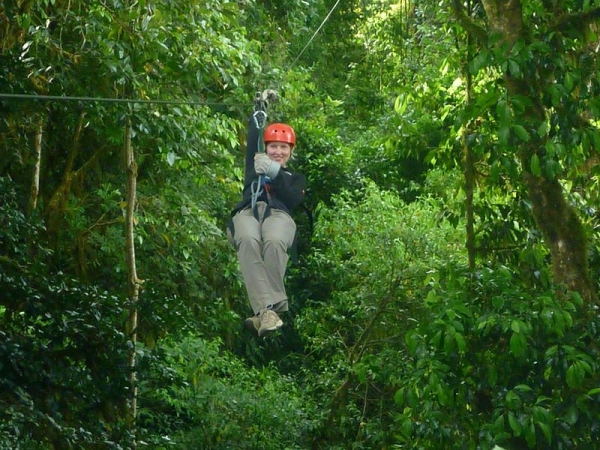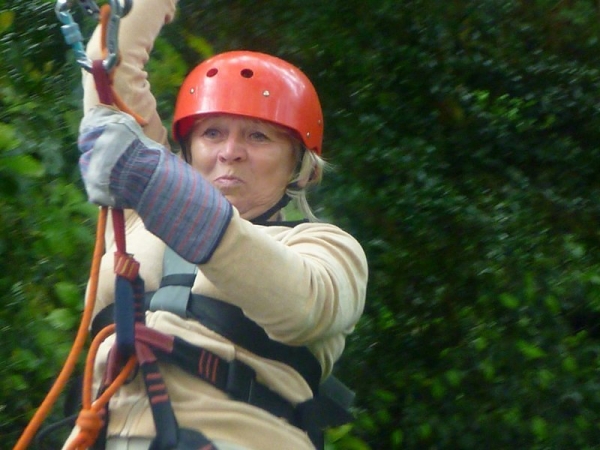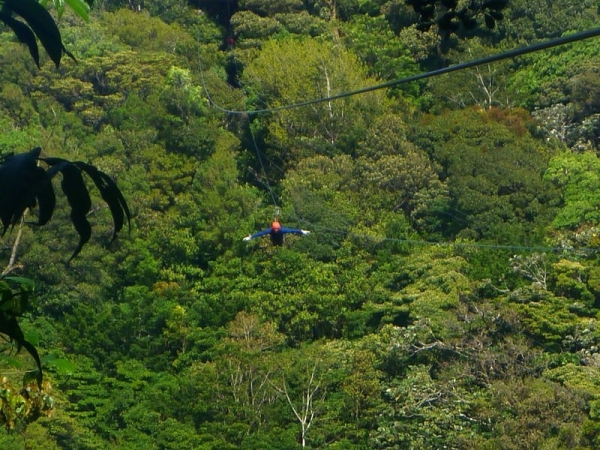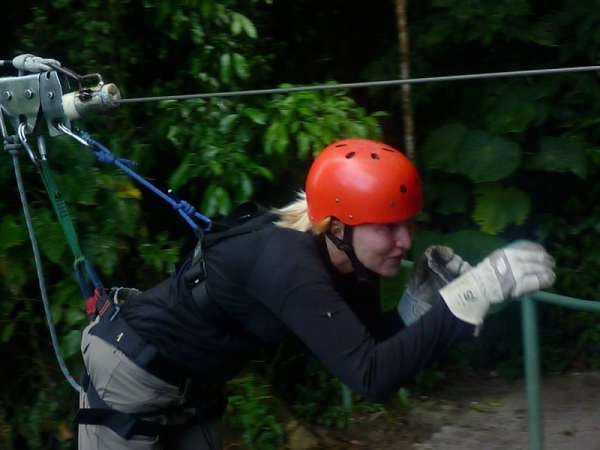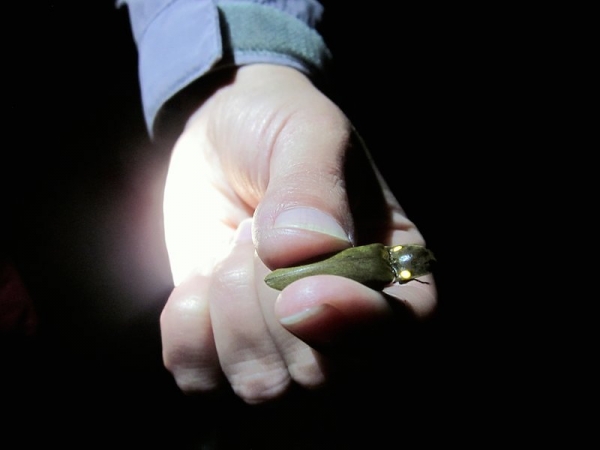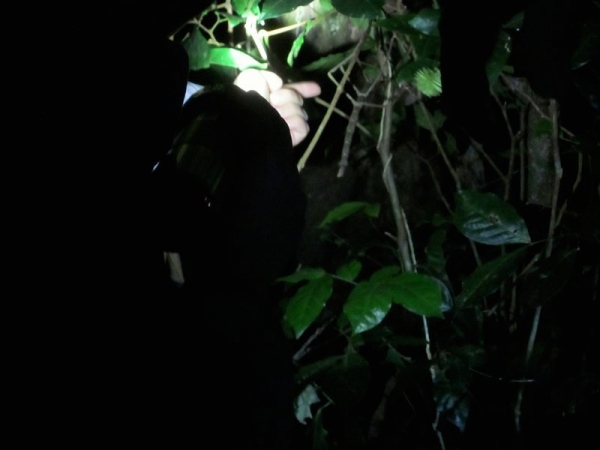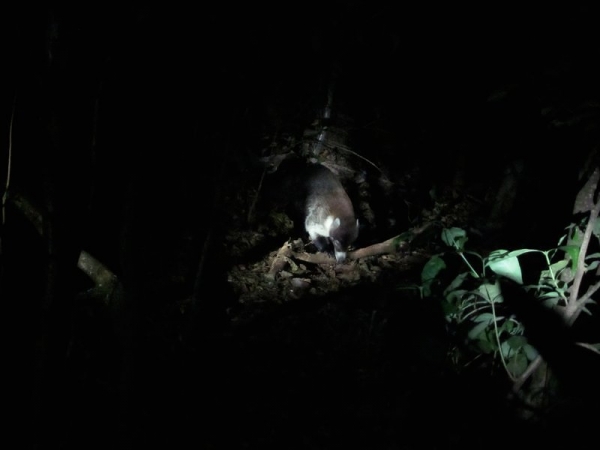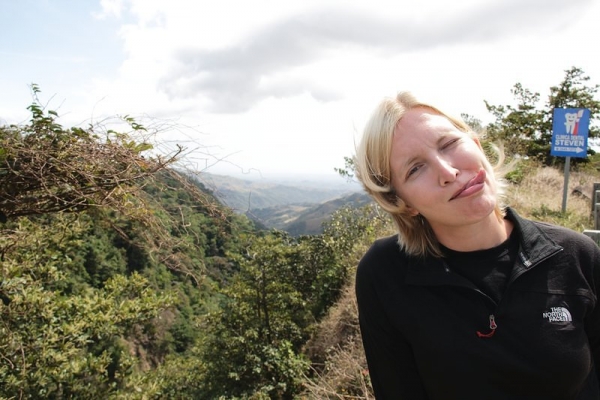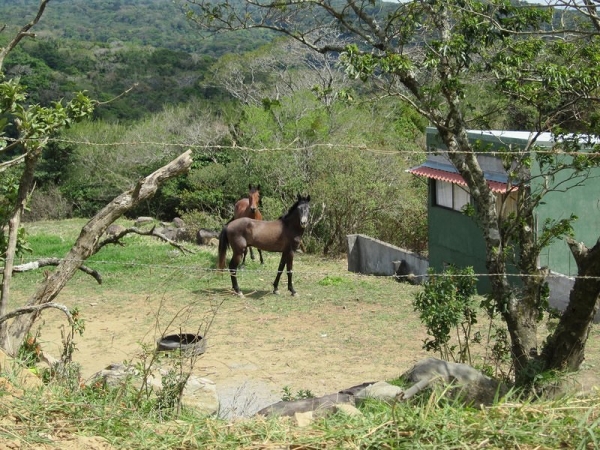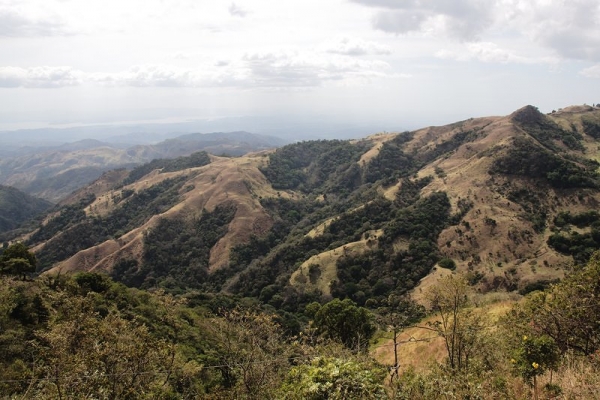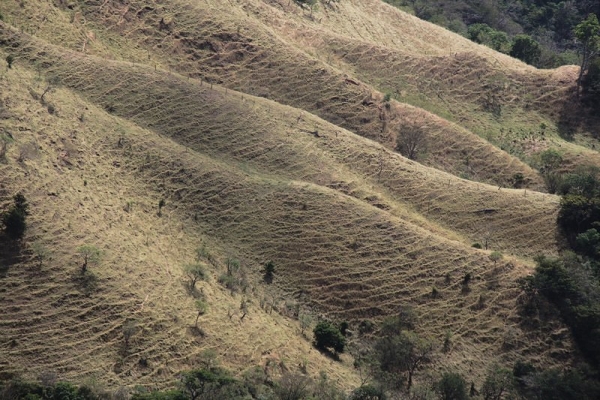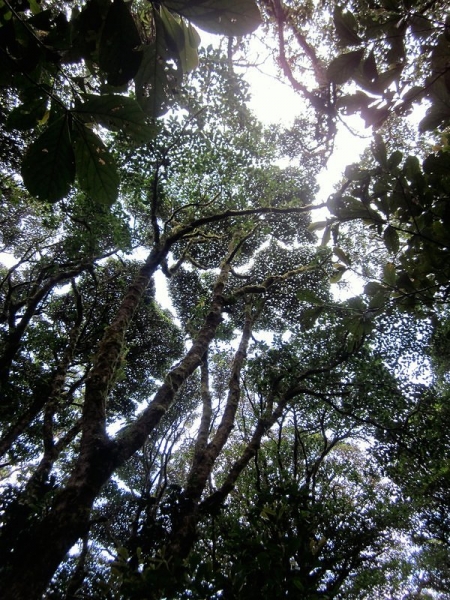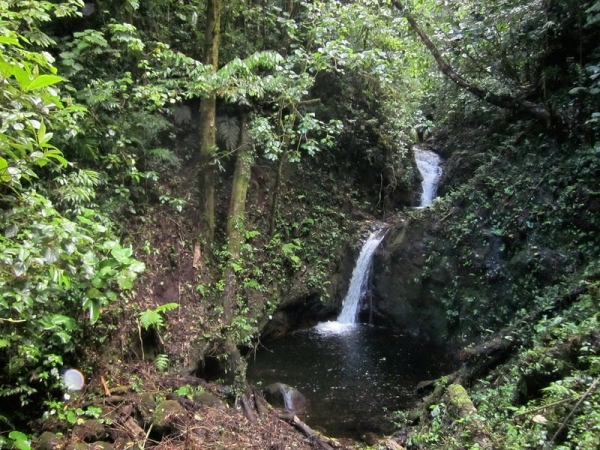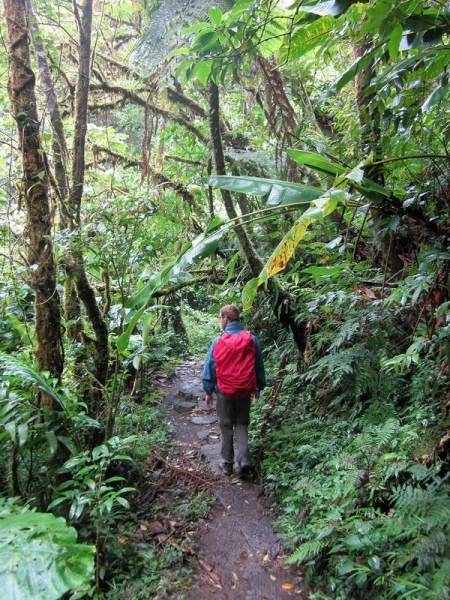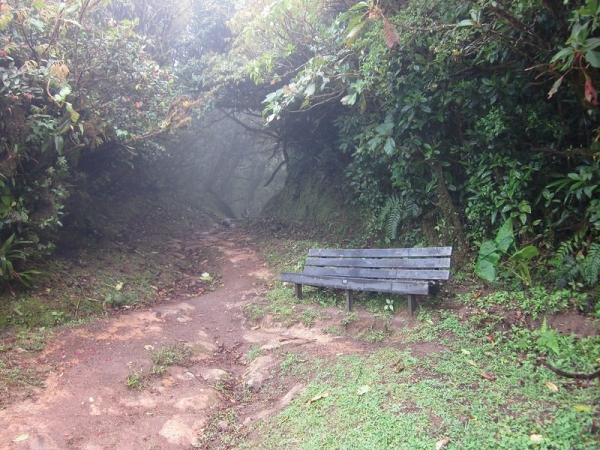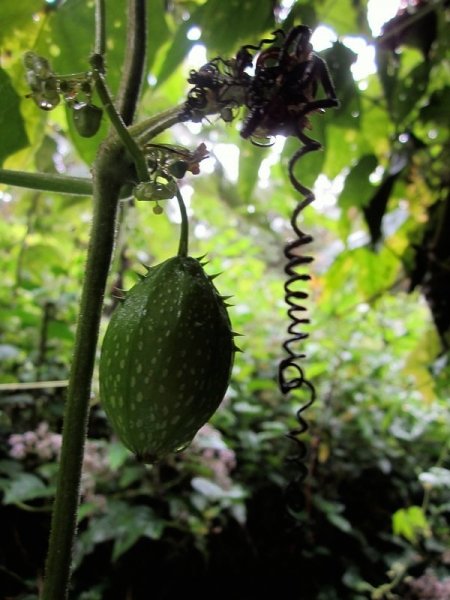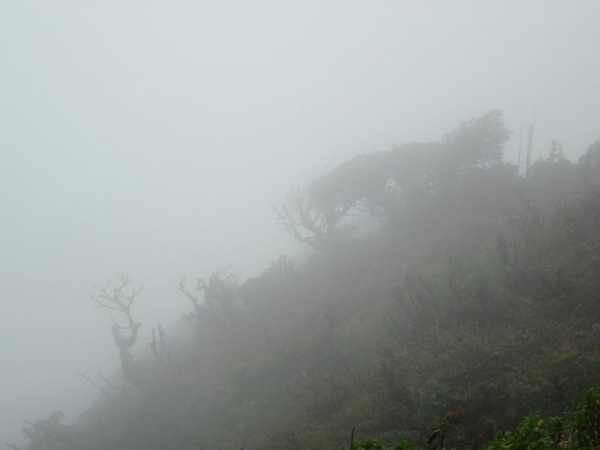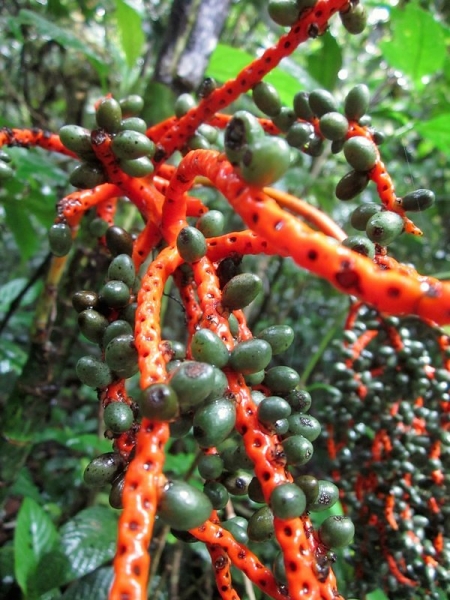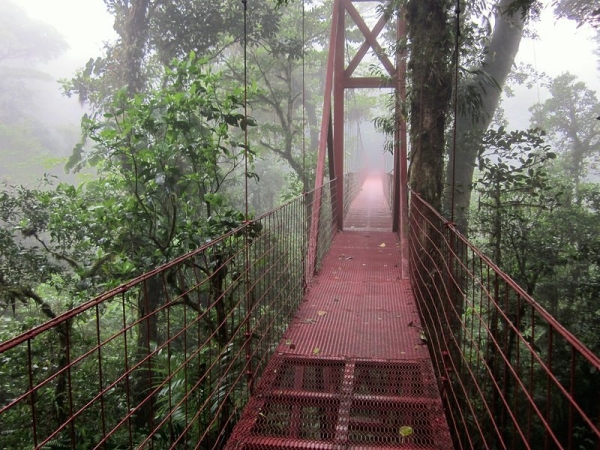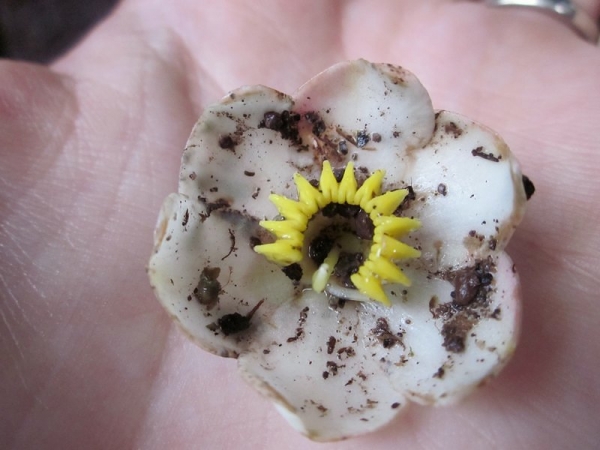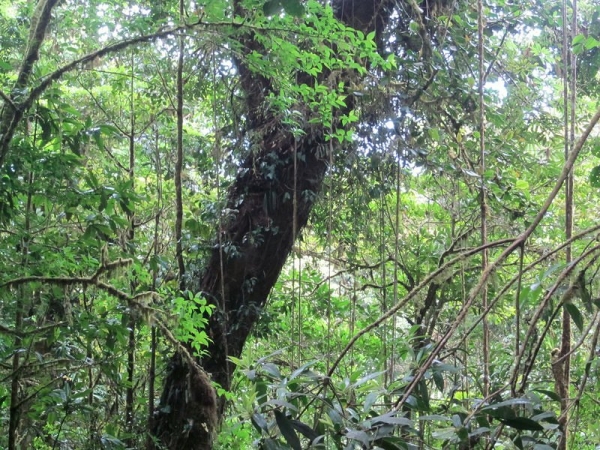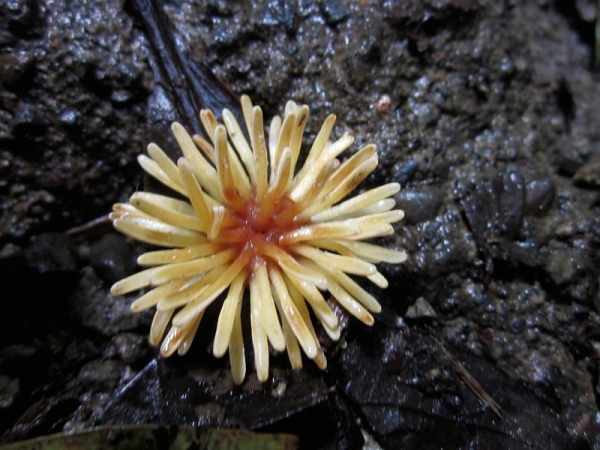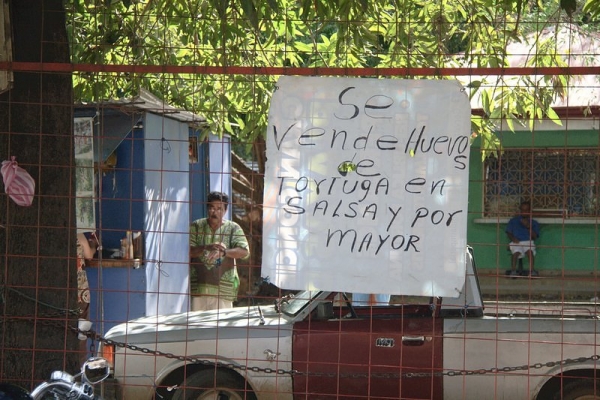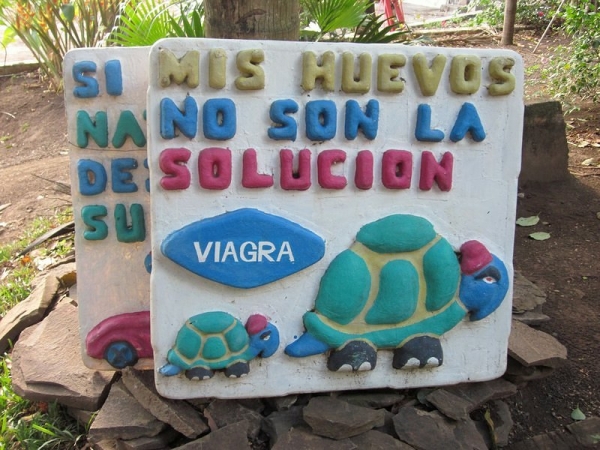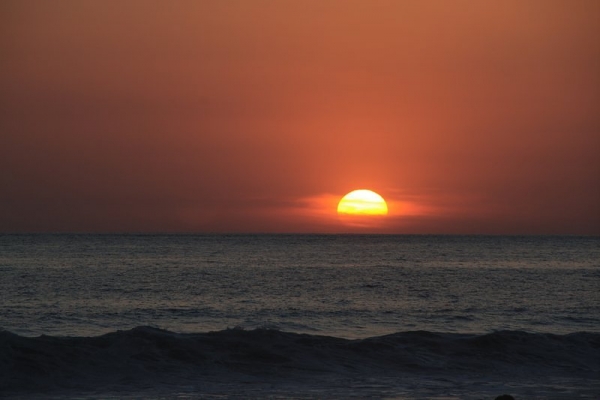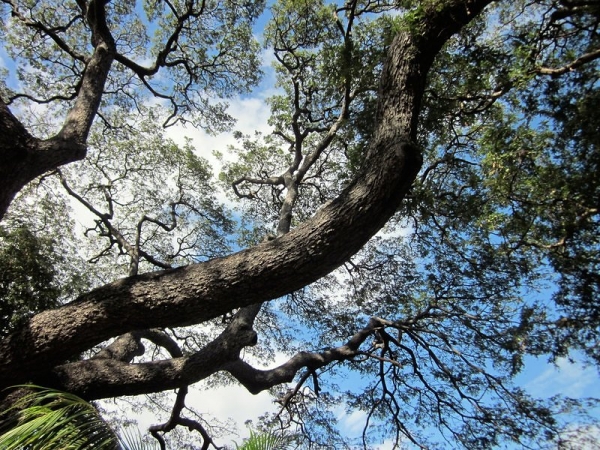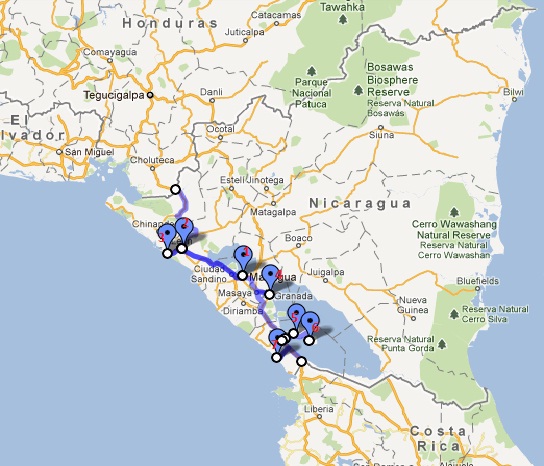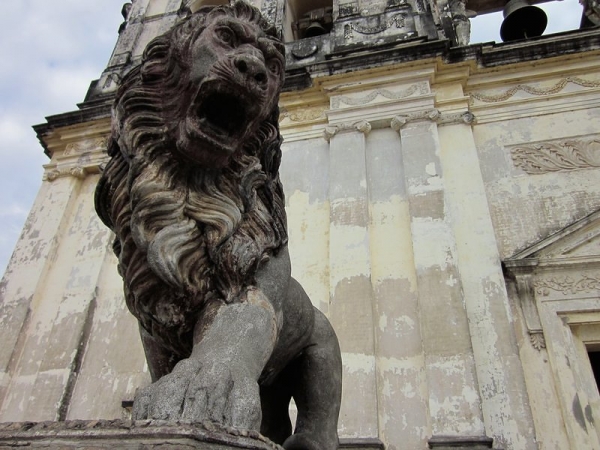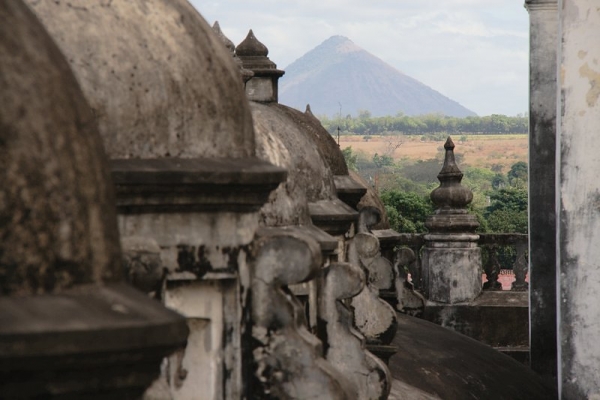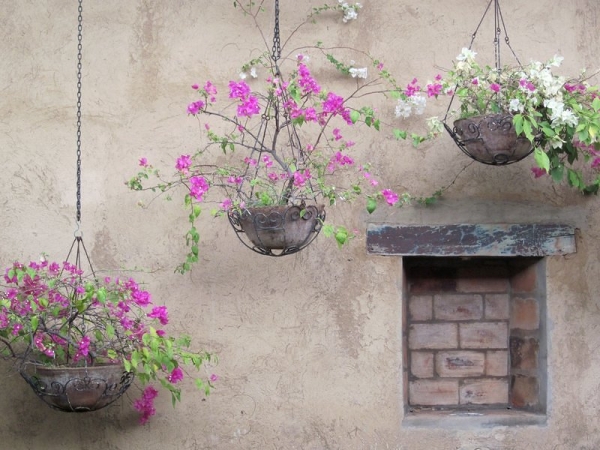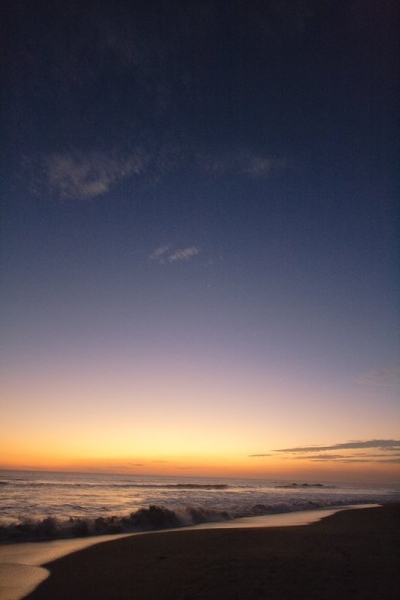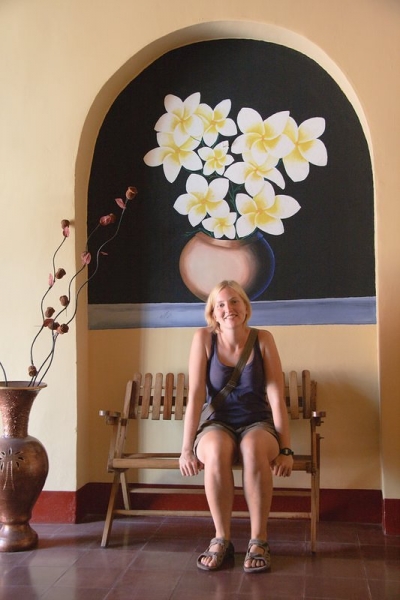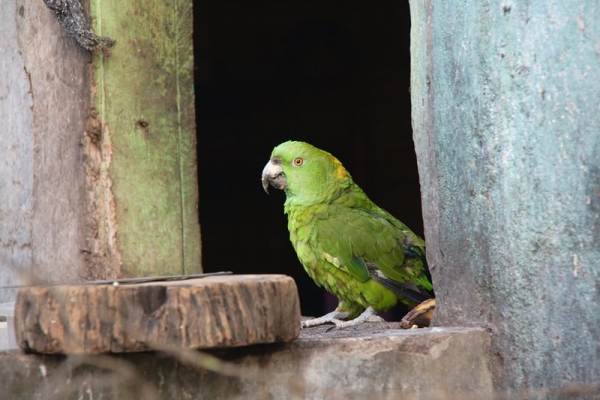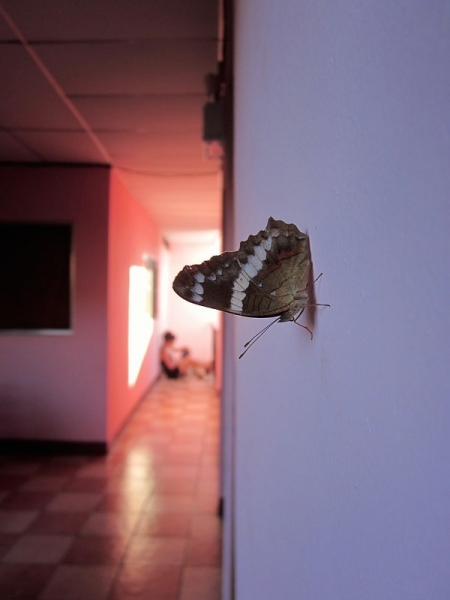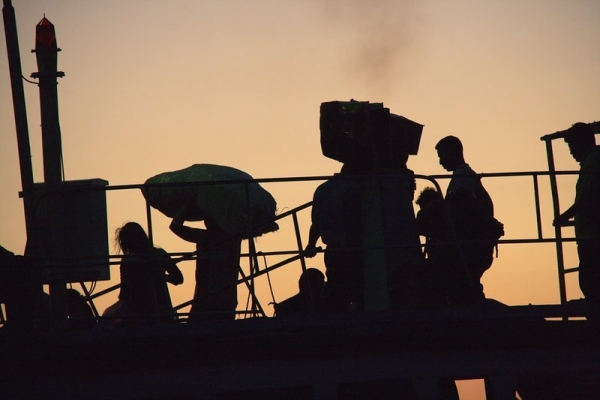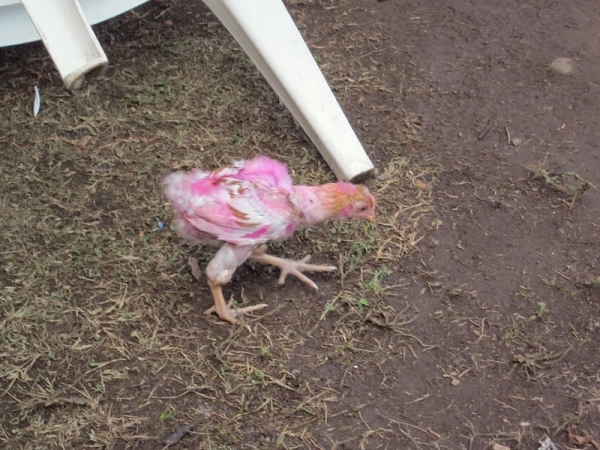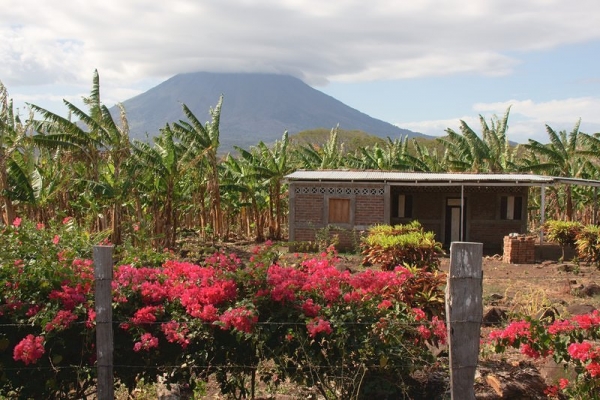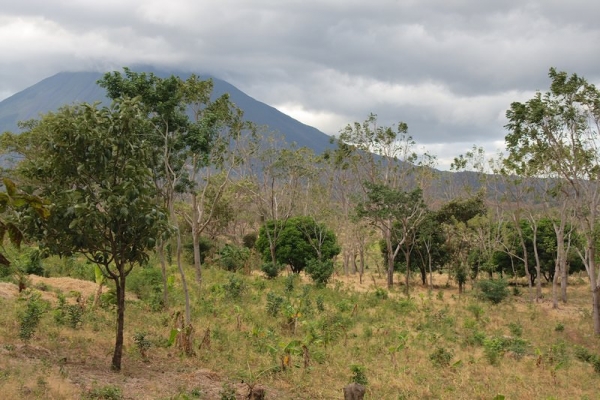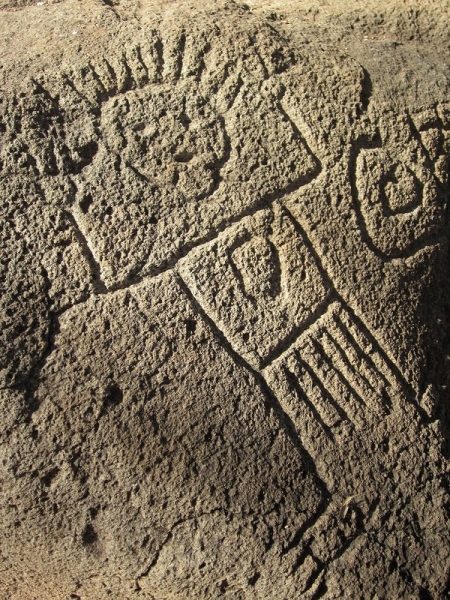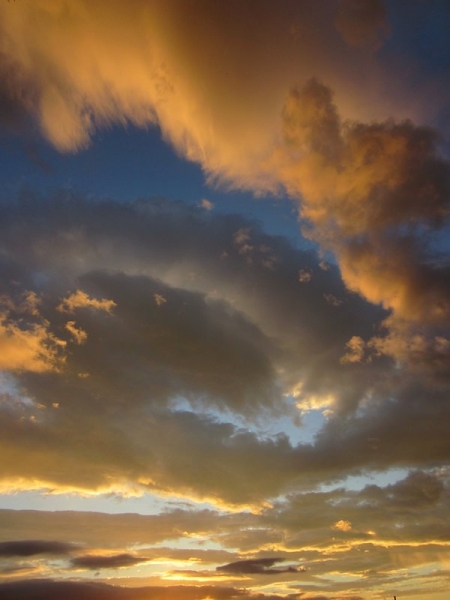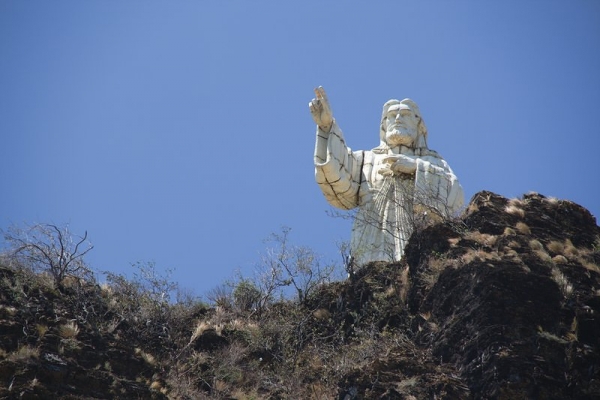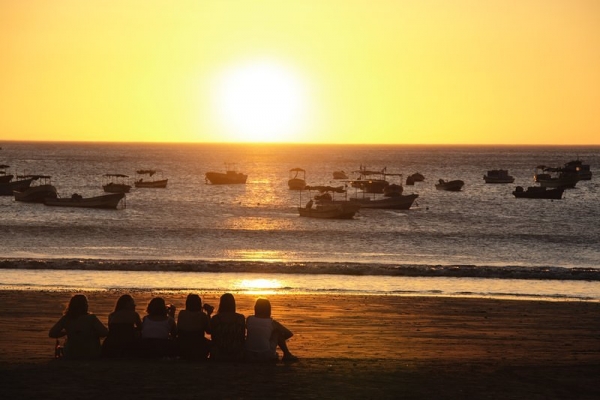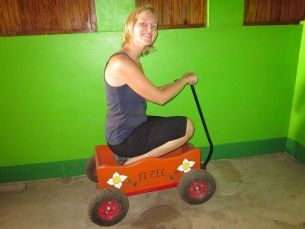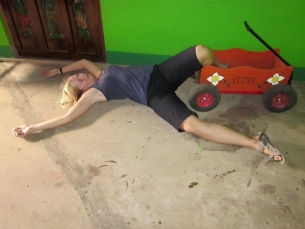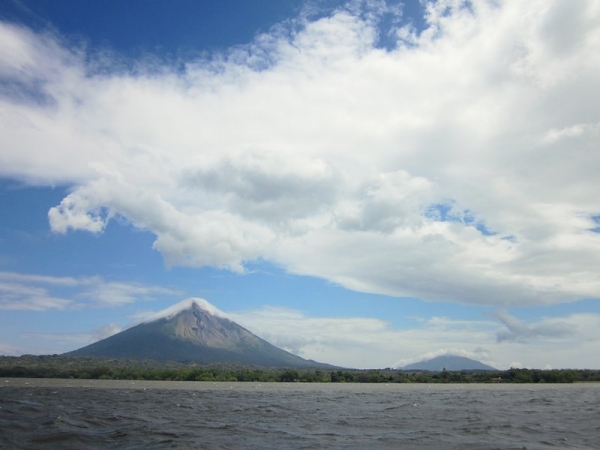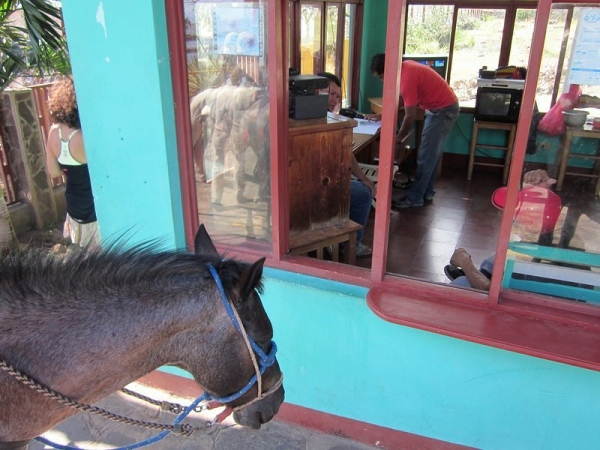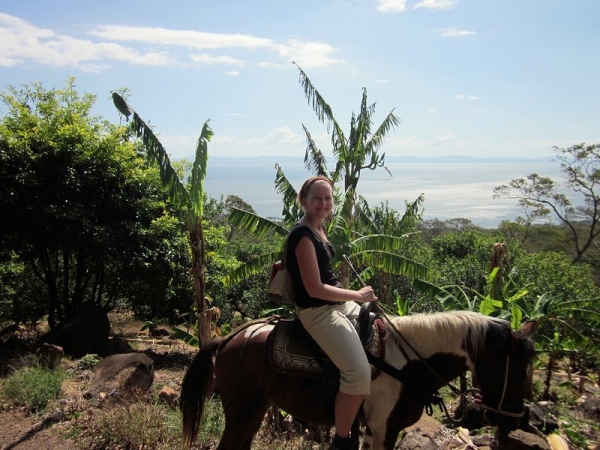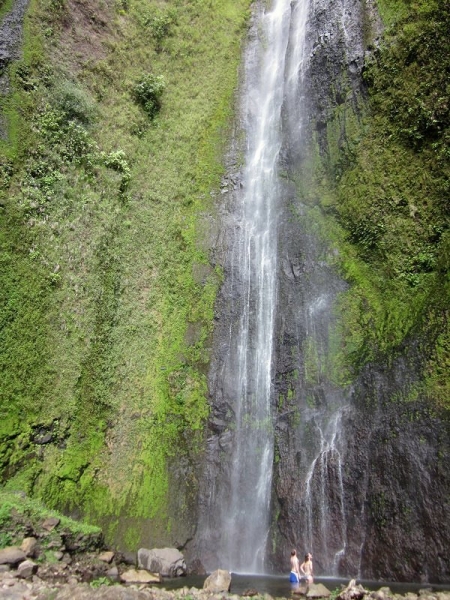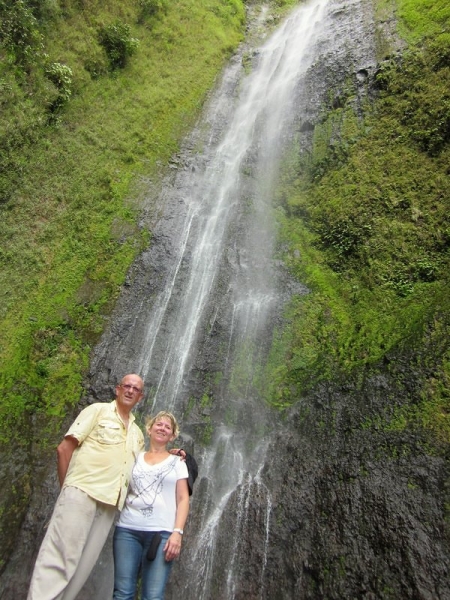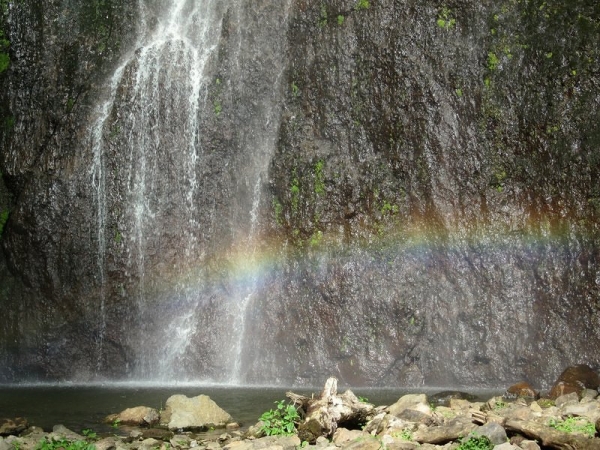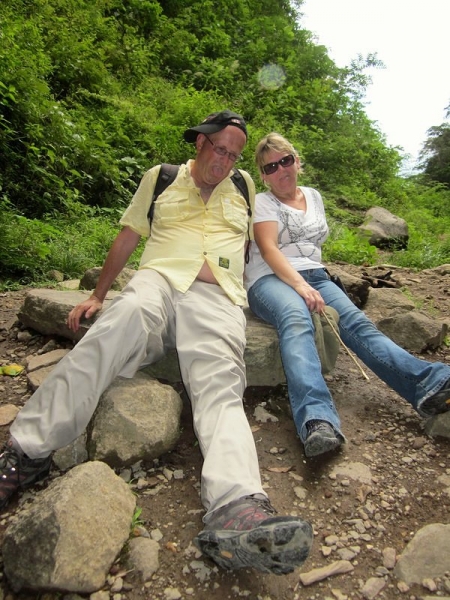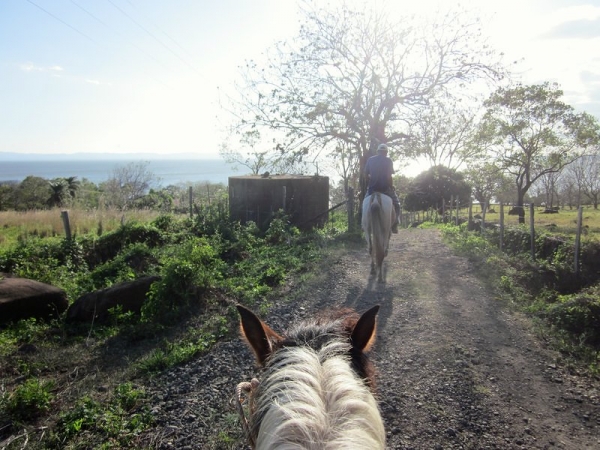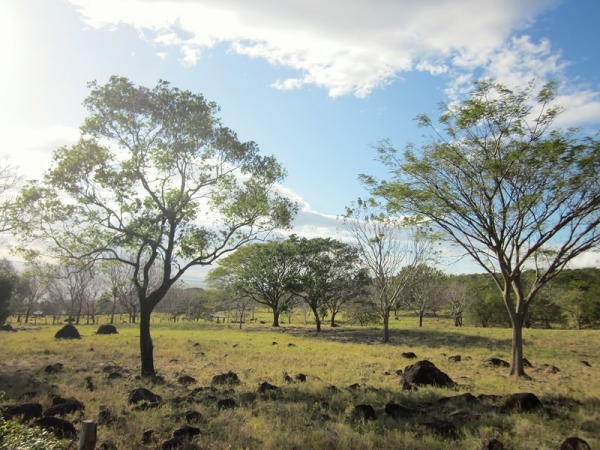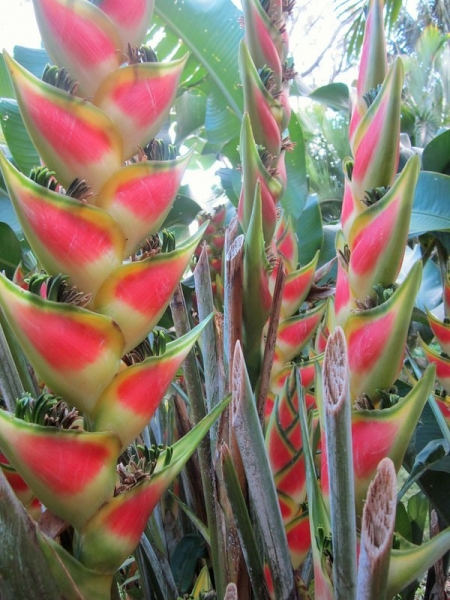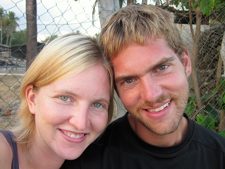There’s A LOT to do in Monteverde, Costa Rica. Especially if you’ve got the cash. You can do a canopy tour, rappel waterfalls, hike up mountains, swim beneath waterfalls, ride horses, tour coffee and sugar cane farms, wander (and wonder) through cloud forests, go bird watching (or sloth watching or monkey watching) by day or by night, check out a cheese factory, or visit the insect house, the frog house, the butterfly house, the snake house, or the orchid house.
To give you an idea of the per person costs… park admissions for the reserves cost between $15-18 USD, cheese tours and animal houses were about $10 each, canopy tours were in the $30-50 range, coffee tours and bird watching were about $35-40.
We, on the other hand, don’t have a lot of cash. Luckily, we found a hostel in Santa Elena (which is also called, Monteverde) for only $7 USD per person, breakfast included – which is cheap by Costa Rican standards. Mom and Terry stayed just up the street from us, and we all got together to experience some of what the area had to offer through a few guided tours, despite the cold (the elevation of Monteverde is such that it is significantly colder than other areas of the country… Mike and I are used to 30°C, so temperatures in the low 20’s are quite chilly for us).
In addition to what we did, Mom and Terry did an early morning bird watching tour and an afternoon coffee tour (both of which they really enjoyed).
Heads up, the photos with a big play button in the middle of them are actually movies! Click to enjoy.
Canopy Tour
Costa Rica is world famous for its ziplines and Monteverde is where it all got started. So not doing a canopy tour was not an option. We booked our tour with a company called Aventura. It cost $35 USD per person and included transportation to and from our hotel, 16 platforms including a Superman line, a 15 m rappel, and a Tarzan swing. With a bit of coaxing, even my mom joined in the fun. The first few lines were to practice braking (we had to brake ourselves by pressing down on the line with our thick leather fortified gloves) and then it was smooth sailing from there. The guides were great, and helped out anyone having troubles. The views were spectacular!
Ziplining
Mom had a little trouble with the braking
The rappel
View from one of the platforms
Mike on the Superman line
My graceful Superman entry
Terry on the Tarzan Swing
Night Walking Tour
A lot of the wildilfe in Monteverde is nocturnal, so a night tour just seemed to make sense. We paid $20 USD per person for a tour of Finca Santa Maria, which included transportation, lights, a guide, and a two and a half hour walk through the forest. I must admit, I was a little skeptical about whether the tour would be worth its pricetag, but I was happy to see my doubts fade away. The tour was easy walking and our eagle-eyed guide spotted an owl, a pit viper, a huge tarantula, fireflies, click beetles, may beetles, a huge stick bug, leafcutter ants, tink frogs, a couple of two-toed sloths, a couple of coatimundis, and an armadillo. I think I was most blown away by the armadillo, but the whole experience was really interesting and informative.
Click Beetle
Can you spot the huge stick bug?
Coatimundi
Walking to the Middle of Nowhere
The afternoon of the night tour, Mike and I set out to find the Monteverde Cloud reserve. We figured we could just walk there (or at least part of the way there) and see how pretty of a walk it would be. We set off with the little map we picked up at our hostel. Unfortunately we misread where the bus stop was and headed off in the completely wrong direction. Luckily for us, the walk had some of the most beautiful vistas we saw while we were there.
Walking through the Reserva Biológica Bosque Nuboso Monteverde
After our failed attempt the day before, Mike and I set out for the Monteverde Cloud Reserve once again. This time, we planned to take a bus there to save our energy for hiking the trails in the reserve. Despite the fact that all the schedules said there was no 7:00 am bus running on Sundays, the seemingly knowledgeable young man at our hostel assured us that there would indeed be a bus. As it turns out, he was wrong and we ended up sharing a cab to the reserve with another traveller for $3 USD per person (instead of the $1.25 USD pp the bus should have cost).
The entrance fee to the reserve was a hefty $18 USD pp. You could hire a guide for another $15 pp, but we opted to explore on our own. The reserve’s workers were very helpful, providing a map of the trails, and a suggested route for the time we planned to spend there.
We spent most of the day wandering the trails (we had the place nearly to ourselves it seemed) and covered nearly every path in the park (about 14 km or so). We brought a picnic lunch of crackers, cheese (we actually found decent cheese made at the Monteverde cheese factory just outside Santa Elena), and salchichon (garlic sausage).
At about 2:00pm, we were ready to head home. There were still no buses running and we couldn’t find anyone else to share a cab with. We decided to walk the 7 km back to Santa Elena, stopping at the cheese factory for some homemade ice cream. We didn’t really see much wildlife (one rodent in the reserve and a lot of insects), but the cloud forest was so impressive we didn’t leave disappointed.
